
BSc, MSc, PhD
Personal Chair
- About
-
- Email Address
- b.e.scott@abdn.ac.uk
- Telephone Number
- +44 (0)1224 273257
- Office Address
Room 412 Zoology School of Biological Sciences University of Aberdeen Tillydrone Ave Aberdeen, AB24 2TZ
- School/Department
- School of Biological Sciences
Tidal Energy
@DWPlanetA Video asking why we are not using more Tidal Power for our energy needs
Memberships and Affiliations
- Internal Memberships
-
- CURRENT
- University of Aberdeen representative on MASTS Executive Board 2022- present
- School of Biological Sciences (SBS) Executive and Line Management Duties 2019- Present
- PAST
- Centre of Energy Transition: Renewable Generation Champion 2020- 2022
- SBS EDI Committee 2019- 2022
- Mentoring Champion SBS 2018-2022
- Athena Swan SBS committee -2016-2022
- Marine Research Collaboration Forum (MarCRF) Chairperson 2012-2016
- Member for Management Group of Environmental Food Security Theme 2012-2016
- Member of the Steering Group of the Energy Theme 2012-2016
- Senatus Academicus - Elected Member Sept 2013-2015
- Athena Swan College working group 2012-2014
- External Memberships
-
- CURRENT
- UKERC Advisory Board
- Co-Director, Offshore Renewable Energy (ORE) SuperGen Hub
- Member of Scottish Government Offshore Renewables Research (ScotMER) group,
- Scientific Advisory Expert Panel for NatureScot 2021- ongoing
- Programme Advisory Group for the NERC ECOWind 2022- ongoing
- European Marine Board Working Group on Marine Renewable Energy
- Scottish Biodiversity Programme Advisory Group – Scottish Government
- Programme Advisory Group for the NERC INSITE programme
- PAST
- Forum Convenor of the Marine Alliance for Science and Technology Scotland (MASTS), Marine Renewable Energy Forum. Marine Renewable Energy Forum
- Member of the Ministerial DEFRA Science Advisory Panel to assist the work of selecting Marine Conservation Zones in England and Wales.
- Scientific Advisory Committee of Scottish Natural Heritage
- Member of Marine Ecosystems Working Group, NERC.
Latest Publications
Ecosystem indicators: Predicting population responses to combined climate and anthropogenic changes in shallow seas
Ecography, vol. 2024, no. 3, e06925Contributions to Journals: ArticlesA paradigm for understanding whole ecosystem effects of offshore wind farms in shelf seas
ICES Journal of Marine ScienceContributions to Journals: Articles- [ONLINE] DOI: https://doi.org/10.1093/icesjms/fsad194
A review of unmanned aerial vehicles usage, as an environmental survey tool, within tidal stream environments
Journal of Marine Science and Engineering , vol. 11, no. 12, 2298Contributions to Journals: Articles- [ONLINE] DOI: https://doi.org/10.3390/jmse11122298
- [OPEN ACCESS] http://aura.abdn.ac.uk/bitstream/2164/22752/1/Slingsby_etal_JMSE_A_Review_Of_VoR.pdf
- [ONLINE] View publication in Scopus
The bottom mixed layer depth as an indicator of subsurface Chlorophyll a distribution
Biogeosciences, vol. 20, no. 16, pp. 3593-3611Contributions to Journals: ArticlesCumulative effects of offshore renewables: From pragmatic policies to holistic marine spatial planning tools
Environmental impact assessment review, vol. 101, 107153Contributions to Journals: Articles
- Research
-
Research Overview
I conduct multi-disciplinary research using my expertise in marine ecology, oceanography and fisheries sciences. My research identifies general rules in bio-physical oceanographic processes that lead to the creation of hotspots of predator-prey activity. Specifically, my research group defines biological and physical variables that provide the limited, patchy locations and conditions where trophic energy is transferred across trophic levels in marine food webs.
My research team using approaches ranging from the collection and use of fine scale (second by second) information throughout the water column from as well as the analysis of large scale (100s or km) long term data sets on spatial population dynamics. Both scales of information are used within simulation modelling methods which are agent based.
Research Areas

Research Specialisms
- Biodiversity Conservation
- Climate Change
- Ecology
- Environmental Risk
- Marine Sciences
Our research specialisms are based on the Higher Education Classification of Subjects (HECoS) which is HESA open data, published under the Creative Commons Attribution 4.0 International licence.
Current Research
PELAgIO: Physics-to-Ecosystem Level Assessment of Impacts of Offshore Windfarms (NERC, TCE, Defra) 2022-2025. PELAgIO will support development of evidence-based policy and marine management through interdisciplinary research that explores the consequences of offshore wind development on marine environments, marine wildlife, and wider ecosystem structures. By observing and modelling over a range of physical and biological scales, using a combination of autonomous platforms, ocean robots, research vessels and satellite observations, PELAgIO will build an ecosystem-level understanding of projected changes
EcoNex: The Marine Energy, Biodiversity and Food Nexus (UKERC) 2022-2024. The UK is current global leader in offshore wind, committed to increase capacity to 50 GW by 2030. Therefore, there is a drive to dramatically cut the approval times from four years to one year. To do this sustainably requires an understanding on the nexus of trade-offs between climate change and multiple uses of marine natural resources (energy extraction, fisheries, and marine protected areas). This project, working with renewable, fishing industries and policy bodies, will enable evidence-based decision making to balance environmental, social, and economic impacts and ensure marine net gain.
PREDICT: Predicting seasonal movement of marine top predators using fish migration routes and autonomous platforms. 2021-2024. PREDICT is an ambitious three-year project funded by Ørsted, the global leader in offshore wind, and a collaboration between the University of Aberdeen and Environmental Research Institute (ERI) at the University of the Highlands and Islands that aims to address knowledge gaps in offshore wind environmental characterisation by improving understanding of fish migration patterns and providing a vision for next-generation monitoring techniques.
MSCA-RIBES: RIver flow regulation, fish BEhaviour and Status (EU 2020-23) RIBES European Training Network (ETN) training 15 ESRs in the interdisciplinary field of eco-hydraulics to find innovative solutions for freshwater fish protection and river continuity restoration in anthropogenically (especially renewable extraction) altered rivers.
EPSRC Supergen Offshore Renewable Energy (ORE) Hub.
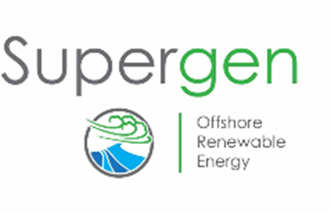
Past Research
VertIBase - Supporting evidence-based decision-making on marine vertebrate interactions with wave and tidal energy. NERC KE (2016-18)
Marine Growth Analysis on Decommissioning Offshore Installations: NERC Oil & Gas Decommissioning Innovation. (2016-17) Applying CoralNet to survey footage from offshore platforms on the UKCS and training software to identify the main marine growth species on UKCS platforms and to calculate their percentage cover.
CORPORATES: NERC Biodiversity & Ecosystem Service Sustainability (BESS) 2014-16 Cooperative Participatory Evaluation of Renewable Technologies on Ecosystem services with SAMS, MSS and JHI. Exchanging knowledge between Marine Renewable Energy Industry, ecosystem service experts, planning and regulatory functions of Government to co-develop a Marine Spatial Planning decision-support system.
Knowledge Transfer Partnership with MeyGen www.meygen.com (2015-17)The KTP will apply the knowledge, techniques and expertise for environmental monitoring around tidal turbines to the MeyGen project.
EcoWATT 2050 EPSRC (2014-2017) Impacts of Very Large Scale Arrays and their Regulation
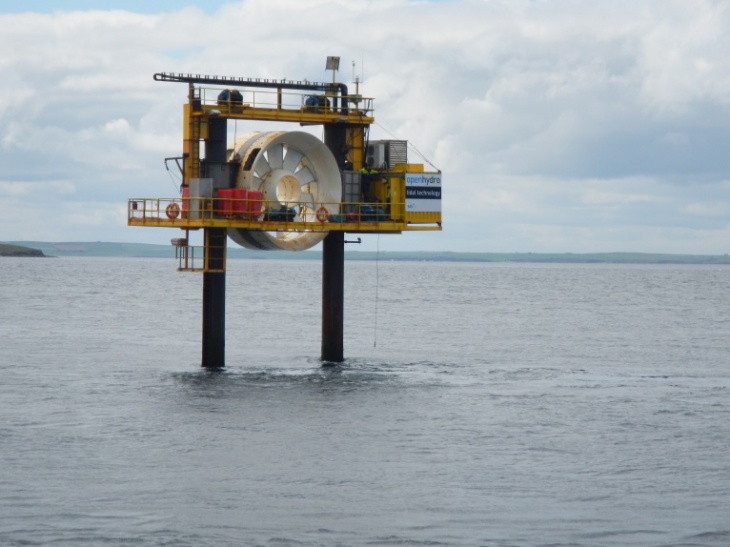
FORSITE: Modelling FORaging STrategies in high energy Environments. OPEN CASE NERC PhD studentship with CASE partners Royal Society for the Protection of Birds (RSPB) and Marine Scotland Science (MSS)
FLOWBEC NERC (2011-2014) FLOw, Water column & Benthic ECcology 4D
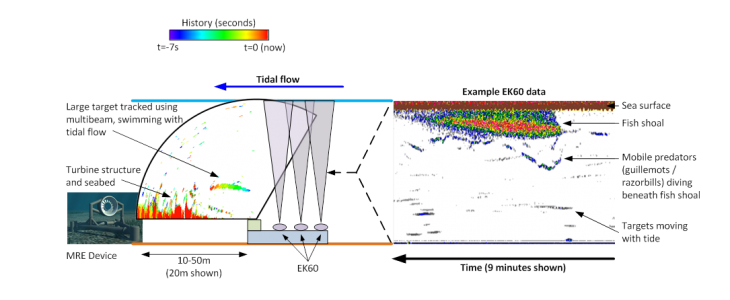
RESPONSE NERC (2011-2014) Understanding How Marine Renewable Device Operations Influences Fine Scale Habitat Use And Behaviour Of Marine Vertebrates
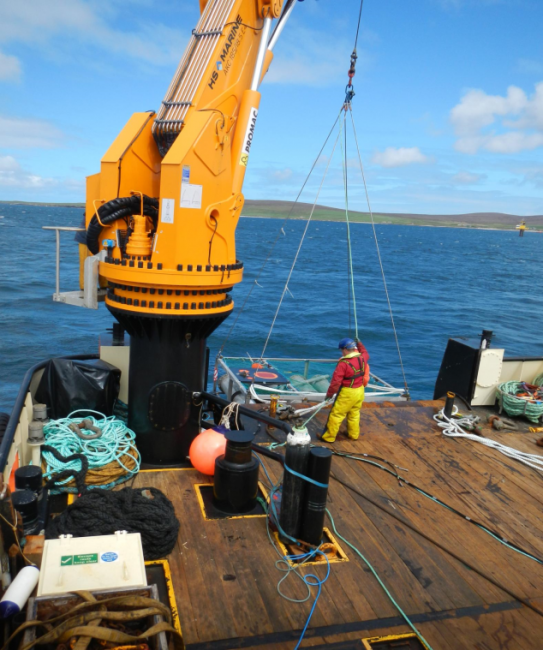
CMARHAB NERC (2008-2010): Critical Marine Habitat
Share the adventure of at-sea research on the James Cook see blog
Project lead by U of Aberdeen with POL, MSS, CEFAS, JNCC, Marine
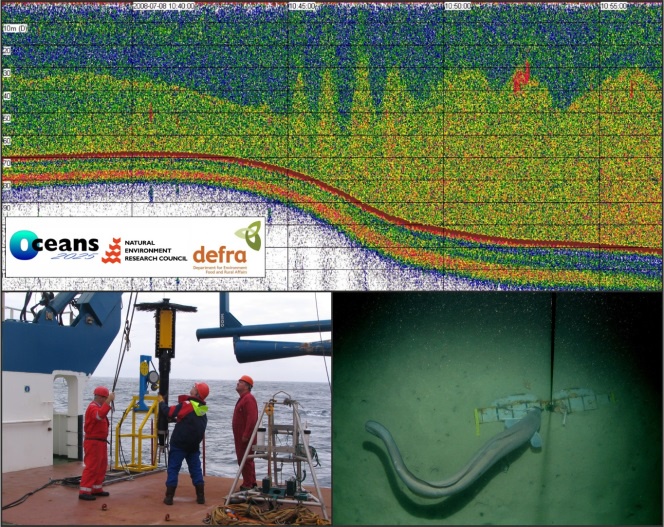
Resource Assessment Group and the Cornish Fish Producers Organisation. The success of the Ecosystem Approach, the sustainable use of fishing areas and the delineation of Marine Protected Areas (MPAs) all require a fundamental understanding of the mechanistic links between oceanographic properties, fish, top predators and fisheries activities. This requires multi-disciplinary, multi-trophic research to define critical marine habitats where multiple species of predators (including fishermen) are most likely to forage for their prey. This project tests two hypotheses concerning the underlying mechanistic forcing that may be occurring in newly identified areas with disproportionately high abundances of top predators (seabirds, marine mammals and fishing activity) and high levels of sub-surface chlorophyll.
PELAgIO: Physics-to-Ecosystem Level Assessment of Impacts of Offshore Windfarms (NERC)
Collaborations
- Prof Nicola Beaumont, PML
- Dr. Paul Bell, NOC, Proudman Oceanographic Laboratories
- Dr. Philippe Blondel, University of Bath
- Dr. Ian Davies, Marine Scotland Sciene (FRS Marine Lab Aberdeen)
- Dr Michela De Dominicis, NOC, Liverpool
- Prof Deborah Greaves, Plymouth
- Prof Matthew Palmer, PML
- Prof Jonathan Side, Heriot-Watt University
- Prof. Jonathan Sharples, NOC, Proudman Oceanographic Laboratories
- Prof. David Thompson, SMRU
- Dr. Ricardo Torres, PML
- Dr Vengatesan Venugopal, University of Edinburgh
- Dr. Tom Webb, University of Sheffield
- Dr. Benjamin Williamson, UHI, ERI
- Prof. Ben Wilson, SAMS
- Prof. Judith Wolf, NOC, Proudman Oceanographic Laboratories
Supervision
My current supervision areas are: Biological and Environmental Sciences.
Funding and Grants
- 2023-28 ORE SuperGen HUB: Offshore Renewable Energy SuperGen Hub. (EPSRC)
- 2022-25 PELAgIO: Physics-to-Ecosystem Level Assessment of Impacts of Offshore Windfarms (NERC, TCE, Defra)
- 2022-24 EcoNex: The Marine Energy, Biodiversity and Food Nexus(UKERC)
- 2021-24 PREDICT: Predicting seasonal movement of marine top predators using fish migration routes and autonomous platforms. Ørsted
- 2018-22 ORE SuperGen HUB: Offshore Renewable Energy SuperGen Hub. (EPSRC)
- 2019-23 SMEBA: Sustainable Marine Ecosystems and Offshore Energy: A Bayesian Modelling Approach. BEIS / HartleyAnderson
- 2018-22 PPCC: Modelling primary production in Scottish waters and the impact of large scale marine renewables and climate change. MASTS, MSS
- 2017-21 INDI-POP: Individuals to populations: The potential effects of large tidal arrays on mobile marine populations (Open NERC CASE)
- 2017-21 DEPTH: Determining the ecology and physics of tidal stream habitats. EMEC, SAMS/UHI, MSS
- 2016-18 Environmental Studies of the MeyGen Tidal Turbine Array: HartleyAnderson Contract
- 2016-18 VertIBase NERC KE - Supporting evidence-based decision-making on marine vertebrate interactions with wave and tidal energy.
- 2016-17 Marine Growth Analysis on Decommissioning Offshore Installations. NERC
- 2015-17 Knowledge Transfer Partnership (KTP - TSB) with MeyGen
- 2015 NERC Marine Renewable Energy KE Internship for Benjamin Williamson.
- 2014-16 NERC Biodiversity & Ecosystem Service Sustainability (BESS) grant entitled Cooperative Participatory Evaluation of Renewable Technologies on Ecosystem services (CORPORATES) with SAMS, MSS and JHI.
- 2014-17 EcoWatt 2050 EPSRC Consortium of Universities of Heriot-Watt, Edinburgh, UHI, Strathclyde, Swansea, St Andrews, NERC and MSS
- 2014-15 Tansley Workshop: Planet Earth-Planet Ocean, Work of John Steele, joint with Tom Webb
- 2013-17 NERC CASE PhD Modelling Foraging Strategies in High Energy Environments (FORSITE) CASE partner is Marine Scotland Science.
- 2011-14 NERC Marine Renewables, Flow, Water Column and Benthic Ecology 4D (FLOWBEC). Consortium grant with NOC Liverpool, Uni. Bath, Uni. Edinburgh, Uni. Plymouth & PML, Uni. Exeter and Queens Uni. Belfast.
- 2011-14 NERC Marine Renewables, Understanding how Marine Renewable device operation influences habitat use and behaviour of Marine Vertebrates (RESPONSE). Consortium grant with SMRU, Uni. St Andrews, Uni. Loughborough, Uni. Edinburgh, Uni. Cranfield.
- 2008-14 Scottish Natural Heritage (SNH) 'Potential Ecological Impact of a Small Scale Tidal Renewable Device on the Isle of May'.
- 2008-10 NERC Sustainable Marine Bio-Resources (SMB) Grant 'Do oceanographic characteristics and predator-prey behaviours define critical marine habitats?' (CMarHab).
- 2007-08 Scottish Executive & FRS Grant 'Impact of temperature on overwinter condition and reproductive potential of sandeel'
- 2005-06 SHEFC Knowledge Transfer Grant 'Sensitivity of ecosystems to tidal renewable energy extraction'
- Teaching
-
Teaching Responsibilities
LEVEL 5 (MSc) www.abdn.ac.uk/study/courses/postgraduate/taught/fish/
Programme Coordinator MSc in Applied Marine and Fisheries Ecology (AMFE): Concepts and Practices for Ecosystem-based Management from 2008-2014
Course Coordinator for 2 of following courses within MSc AMFE:
- ZO5012 Marine and Fisheries Ecology, Conservation and Management
- ZO5518 Marine Spatial Management
LEVEL 5 Post-Grad Lecturing in:
- Z05304 Population Ecology
- EV551 Spatial Information Analysis
LEVEL 2-4 Undergraduate Lecturing in:
- SBS Honours Essays and Projects
- BI25Z2 Ocean Biology
- Z03305 Animal Population Ecology
Non-course Teaching Responsibilities
Personal Tutor to 18 UG students
- Publications
-
Page 1 of 3 Results 1 to 50 of 109
Ecosystem indicators: Predicting population responses to combined climate and anthropogenic changes in shallow seas
Ecography, vol. 2024, no. 3, e06925Contributions to Journals: ArticlesA paradigm for understanding whole ecosystem effects of offshore wind farms in shelf seas
ICES Journal of Marine ScienceContributions to Journals: Articles- [ONLINE] DOI: https://doi.org/10.1093/icesjms/fsad194
A review of unmanned aerial vehicles usage, as an environmental survey tool, within tidal stream environments
Journal of Marine Science and Engineering , vol. 11, no. 12, 2298Contributions to Journals: Articles- [ONLINE] DOI: https://doi.org/10.3390/jmse11122298
- [OPEN ACCESS] http://aura.abdn.ac.uk/bitstream/2164/22752/1/Slingsby_etal_JMSE_A_Review_Of_VoR.pdf
- [ONLINE] View publication in Scopus
The bottom mixed layer depth as an indicator of subsurface Chlorophyll a distribution
Biogeosciences, vol. 20, no. 16, pp. 3593-3611Contributions to Journals: ArticlesCumulative effects of offshore renewables: From pragmatic policies to holistic marine spatial planning tools
Environmental impact assessment review, vol. 101, 107153Contributions to Journals: ArticlesEuropean offshore renewable energy: Towards a sustainable future
European Marine Board. 88 pagesBooks and Reports: Other Reports- [ONLINE] https://www.marineboard.eu/publications/european-offshore-renewable-energy-towards-sustainable-future
- [ONLINE] DOI: https://doi.org/10.5281/zenodo.7561906
- [ONLINE] https://www.marineboard.eu/sites/marineboard.eu/files/public/New%20website/Foresight/Marine%20Renewable%20Energy/EMB_FSB9_European_offshore_renewable_energy_Webv2.pdf
The bigger picture: developing a low-cost graphical user interface to process drone imagery of tidal stream environments
International Marine Energy Journal, vol. 6, no. 1, pp. 11–17Contributions to Journals: ArticlesA new strategic framework to structure Cumulative Impact Assessment (CIA)
International Marine Energy Journal, vol. 5, no. 3, pp. 339-347Contributions to Journals: ArticlesUK perspective research landscape for offshore renewable energy and its role in delivering net zero
Progress in Energy, vol. 4, no. 4, 042012Contributions to Journals: ArticlesComparing distribution of harbour porpoise using Generalized Additive Models and hierarchical Bayesian models with Integrated Nested Laplace Approximation
Ecological Modelling, vol. 470, 110011Contributions to Journals: ArticlesAn ecosystem-based natural capital evaluation framework that combines environmental and socio-economic implications of offshore renewable energy developments
Progress in Energy, vol. 4, no. 3, 032005Contributions to Journals: ArticlesEcologically-Sustainable Futures for Large-Scale Renewables and How to Get There
International Marine Energy Journal (IMEJ) , vol. 5, no. 1, pp. 37-43Contributions to Journals: ArticlesTidal streams, fish and seabirds: understanding the linkages between mobile predators, prey, and hydrodynamics
Ecosphere, vol. 13, no. 5, e4080Contributions to Journals: ArticlesA proxy of subsurface Chlorophyll-a in shelf waters: use of density profiles and the below mixed layer depth (BMLD)
Working Papers: Preprint Papers- [ONLINE] DOI: https://doi.org/10.5194/egusphere-2022-140
Environmental Issues for Offshore Renewable Energy
Comprehensive Renewable Energy: Environmental and Social Issues. Letcher, T. M. (ed.). 2 edition. Elsevier, pp. 25-59, 35 pagesChapters in Books, Reports and Conference Proceedings: Chapters (Peer-Reviewed)- [ONLINE] DOI: https://doi.org/10.1016/B978-0-12-819727-1.00036-4
Use of our Future Seas: Relevance of Spatial and Temporal Scale for Physical and Biological Indicators
Frontiers in Marine Science, vol. 8, 769680Contributions to Journals: ArticlesSpatiotemporal variation in harbor porpoise distribution and foraging across a landscape of fear
Marine Mammal Science, vol. 38, no. 1, pp. 42-57Contributions to Journals: ArticlesA review of the UK and British Channel Islands practical tidal stream energy resource
Proceedings of the Royal Society A: Mathematical, Physical and Engineering Sciences, vol. 477, no. 2255Contributions to Journals: ArticlesBayesian Network Modelling provides Spatial and Temporal Understanding of Ecosystem Dynamics within Shallow Shelf Seas
Ecological Indicators, vol. 129, 107997Contributions to Journals: ArticlesStatistical power analysis of seabird monitoring methods in strong tidal streams
Contributions to Conferences: PapersApplication of a multibeam echosounder to document changes in animal movement and behaviour around a tidal turbine structure
ICES Journal of Marine Science, vol. 78, no. 4, pp. 1253-1266Contributions to Journals: ArticlesWhy the Ocean Matters in Climate Negotiations
COP26 Universities Network Briefing. 12 pagesBooks and Reports: Other ReportsSurface Characterisation of Kolk-Boils within Tidal Stream Environments Using UAV Imagery
Journal of Marine Science and Engineering , vol. 9, no. 5, 484Contributions to Journals: ArticlesFishing within offshore wind farms in the North Sea: Stakeholder perspectives for multi-use from Scotland and Germany
Journal of Environmental Management, vol. 279, 111762Contributions to Journals: ArticlesIntegrating stakeholder knowledge through modular cooperative participatory processes for marine spatial planning outcomes (CORPORATES)
Ecosystem Services, vol. 44, 101126Contributions to Journals: ArticlesEcological costs of climate change on marine predator-prey population distributions by 2050
Ecology and Evolution, vol. 10, no. 2, pp. 1069-1086Contributions to Journals: Articles- [ONLINE] DOI: https://doi.org/10.1002/ece3.5973
- [OPEN ACCESS] http://aura.abdn.ac.uk/bitstream/2164/13646/1/Sadykova_etal_ece_Ecological_costs_VOR.pdf
- [ONLINE] View publication in Scopus
Predictable changes in fish school characteristics due to a tidal turbine support structure
Renewable Energy, vol. 141, pp. 1092-1102Contributions to Journals: Articles- [ONLINE] DOI: https://doi.org/10.1016/j.renene.2019.04.065
- [OPEN ACCESS] http://aura.abdn.ac.uk/bitstream/2164/12265/1/Predictable_changes_in_fish_school_characteristics_due_to_a_tidal_turbine_support_structure.pdf
- [ONLINE] View publication in Scopus
- [ONLINE] https://linkinghub.elsevier.com/retrieve/pii/S096014811930549X
- [ONLINE] View publication in Mendeley
Comparison of marine and terrestrial ecosystems: suggestions of an evolutionary perspective influenced by environmental variation
ICES Journal of Marine Science, vol. 76, no. 1, pp. 50-59Contributions to Journals: Articles- [ONLINE] DOI: https://doi.org/10.1093/icesjms/fsy186
Fish distributions in a tidal channel indicate the behavioural impact of a marine renewable energy installation
Energy Reports, vol. 4, pp. 65-69Contributions to Journals: ArticlesShould phytoplankton be a key consideration for marine management?
Marine Policy, vol. 97, pp. 1-9Contributions to Journals: ArticlesIdentifying the larva of the fan mussel, Atrina fragilis (Pennant, 1777) (Pinnidae)
Journal of Molluscan Studies, vol. 84, no. 3, pp. 247-258Contributions to Journals: Articles- [ONLINE] DOI: https://doi.org/10.1093/mollus/eyy015
- [OPEN ACCESS] http://aura.abdn.ac.uk/bitstream/2164/12291/2/Stirling_et_al_final_edited_for_UoA_1_.pdf
- [OPEN ACCESS] http://aura.abdn.ac.uk/bitstream/2164/12291/1/Fig.1.pdf
- [OPEN ACCESS] http://aura.abdn.ac.uk/bitstream/2164/12291/6/Fig.2.pdf
- [OPEN ACCESS] http://aura.abdn.ac.uk/bitstream/2164/12291/3/Fig.3.pdf
- [OPEN ACCESS] http://aura.abdn.ac.uk/bitstream/2164/12291/7/Fig.4.pdf
- [OPEN ACCESS] http://aura.abdn.ac.uk/bitstream/2164/12291/9/Fig.5.pdf
- [OPEN ACCESS] http://aura.abdn.ac.uk/bitstream/2164/12291/4/Fig.6.pdf
- [OPEN ACCESS] http://aura.abdn.ac.uk/bitstream/2164/12291/8/Fig.7.pdf
- [OPEN ACCESS] http://aura.abdn.ac.uk/bitstream/2164/12291/5/Fig.8.pdf
Regional-scale patterns in harbour porpoise occupancy of tidal stream environments
ICES Journal of Marine Science, vol. 75, no. 2, pp. 701-710Contributions to Journals: Articles- [ONLINE] DOI: https://doi.org/10.1093/icesjms/fsx164
- [ONLINE] View publication in Scopus
Displacement of existing activities
Offshore Energy and Marine Spatial Planning. Yates, K. L., Bradshaw, C. J. A. (eds.). Routledge Taylor & Francis Group, 25 pagesChapters in Books, Reports and Conference Proceedings: Chapters (Peer-Reviewed)Automated Image Analysis of Offshore Infrastructure Marine Biofouling
Journal of Marine Science and Engineering , vol. 6, no. 1, 2Contributions to Journals: ArticlesTaking movement data to new depths: Inferring prey availability and patch profitability from seabird foraging behavior
Ecology and Evolution, vol. 7, no. 23, pp. 10252-10265Contributions to Journals: ArticlesLocal vs Global: How to assess the ecological cost and benefits of large scale renewables?
Chapters in Books, Reports and Conference Proceedings: Conference Proceedings- [ONLINE] DOI: https://doi.org/10.1109/OCEANSE.2017.8085013
- [ONLINE] View publication in Scopus
Multisensor Acoustic Tracking of Fish and Seabird Behavior Around Tidal Turbine Structures in Scotland
IEEE Journal of Oceanic Engineering, vol. 42, no. 4, pp. 948-965Contributions to Journals: ArticlesHydrodynamic Impacts of a Marine Renewable Energy Installation on the Benthic Boundary Layer in a Tidal Channel
Energy Procedia, vol. 125, pp. 250-259Contributions to Journals: ArticlesComparative studies reveal variability in the use of tidal stream environments by seabirds
Marine Policy, vol. 81, pp. 143-152Contributions to Journals: Articles- [ONLINE] DOI: https://doi.org/10.1016/j.marpol.2017.03.023
- [ONLINE] View publication in Scopus
Bayesian joint models with INLA exploring marine mobile predator-prey and competitor species habitat overlap
Ecology and Evolution, vol. 7, no. 14, pp. 5212-5226Contributions to Journals: ArticlesInterannual variability in reproductive traits of the Patagonian toothfish Dissostichus eleginoides around the sub-Antarctic island of South Georgia
Journal of Fish Biology, vol. 91, no. 1, pp. 278-301Contributions to Journals: Articles- [ONLINE] DOI: https://doi.org/10.1111/jfb.13344
ScotMap: Participatory mapping of inshore fishing activity to inform marine spatial planning in Scotland
Marine Policy, vol. 79, pp. 8-18Contributions to Journals: Articles- [ONLINE] DOI: https://doi.org/10.1016/j.marpol.2017.01.009
- [OPEN ACCESS] http://aura.abdn.ac.uk/bitstream/2164/8369/1/ScotMap.pdf
- [ONLINE] View publication in Scopus
Diurnal variation in harbour porpoise detection – potential implications for management
Marine Ecology Progress Series, vol. 570, pp. 223-232Contributions to Journals: ArticlesAutomatic active acoustic target detection in turbulent aquatic environments
Limnology and oceanography-Methods, vol. 15, no. 2, pp. 184-199Contributions to Journals: ArticlesImpact of rising temperature on reproductive investment in a capital breeder: The lesser sandeel
Journal of Experimental Marine Biology and Ecology, vol. 486, pp. 52-58Contributions to Journals: Articles- [ONLINE] DOI: https://doi.org/10.1016/j.jembe.2016.09.014
- [ONLINE] View publication in Scopus
Comparing nekton distributions at two tidal energy sites suggests potential for generic environmental monitoring
International Journal of Marine Energy, vol. 16, pp. 235-249Contributions to Journals: Articles- [ONLINE] DOI: https://doi.org/10.1016/j.ijome.2016.07.004
Quantifying pursuit-diving seabirds’ associations with fine-scale physical features in tidal stream environments
Journal of Applied Ecology, vol. 53, no. 6, pp. 1653–1666Contributions to Journals: ArticlesPredictable hydrodynamic conditions explain temporal variations in the density of benthic foraging seabirds in a tidal stream environment
ICES Journal of Marine Science, vol. 73, no. 10, pp. 2677-2686Contributions to Journals: ArticlesEcholocation detections and digital video surveys provide reliable estimates of the relative density of harbour porpoises
Methods in Ecology and Evolution, vol. 7, no. 7, pp. 762-769Contributions to Journals: ArticlesUsing verified species distribution models to inform the conservation of a rare marine species
Diversity and Distributions, vol. 22, no. 7, pp. 808-822Contributions to Journals: Articles- [ONLINE] DOI: https://doi.org/10.1111/ddi.12447
- [ONLINE] View publication in Scopus
